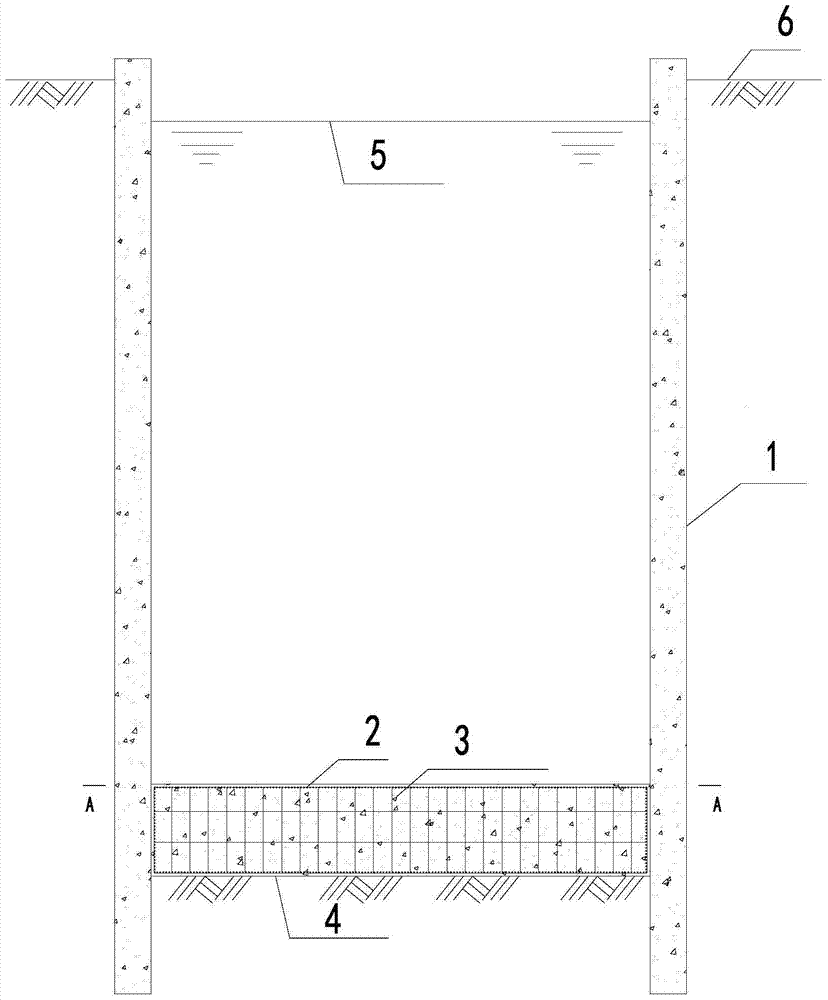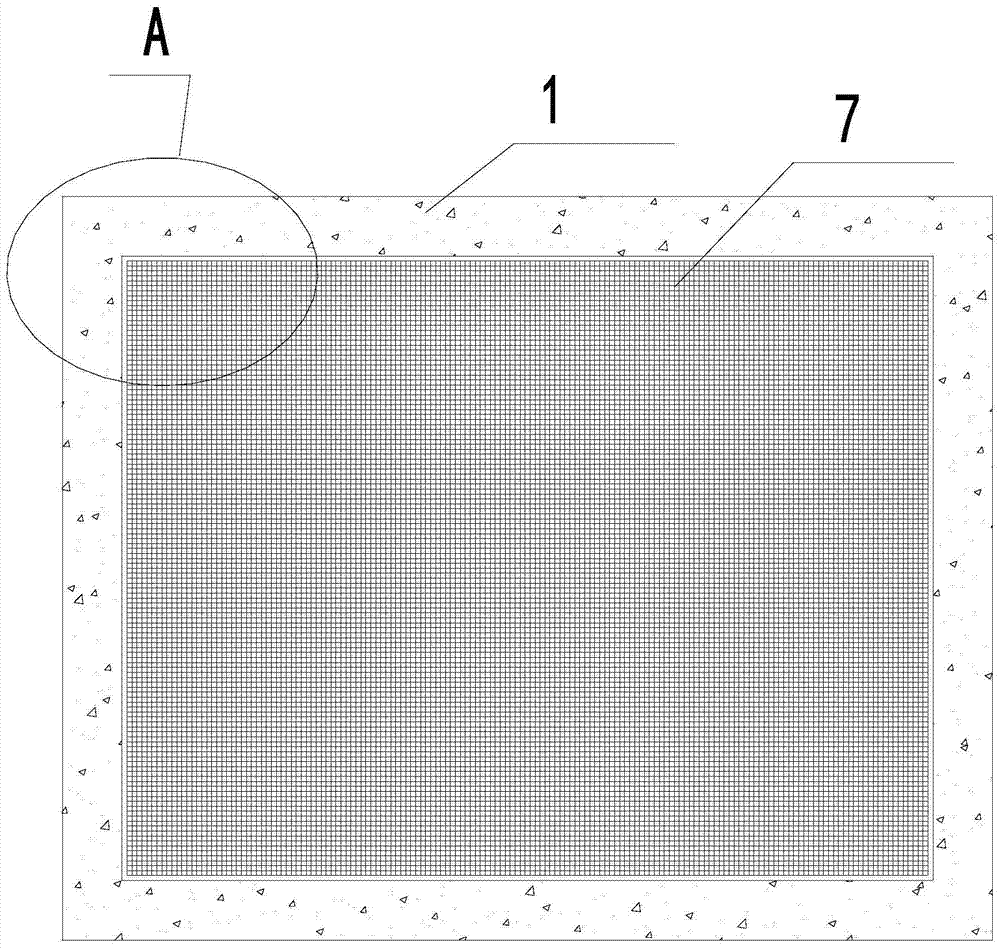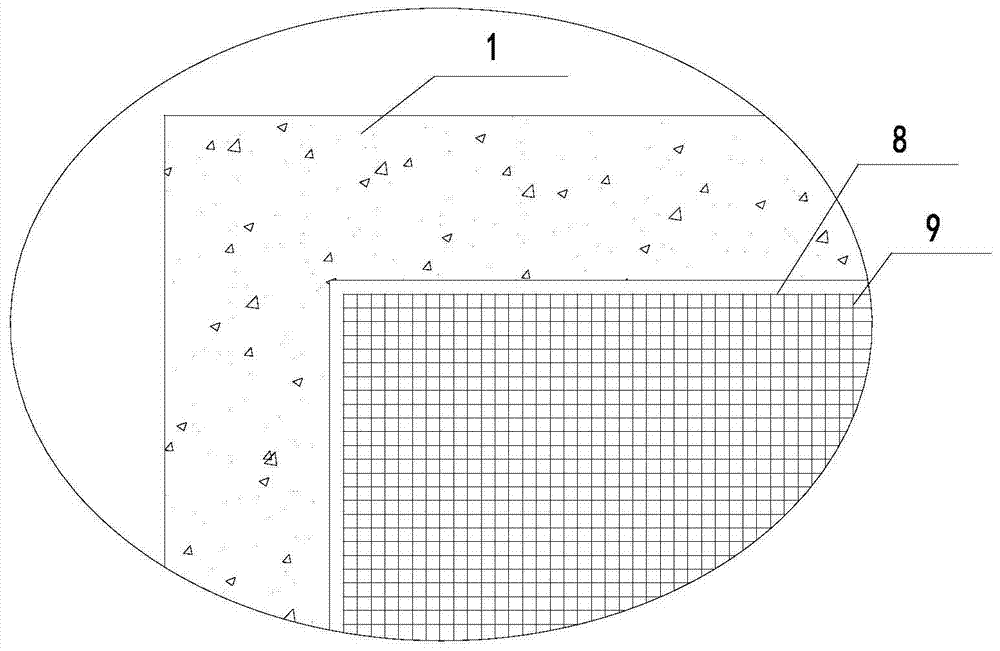A construction method of underwater bottom-sealing concrete using steel truss reinforcement
An underwater back cover and construction method technology, which is applied in basic structure engineering, construction and other directions, can solve the problems of heavy weight, easy deformation of hoisting, high hoisting cost, achieve small plane area and weight, reduce construction risks, and hoist equipment capacity. small effect
- Summary
- Abstract
- Description
- Claims
- Application Information
AI Technical Summary
Problems solved by technology
Method used
Image
Examples
Embodiment Construction
[0041] The following non-limiting examples illustrate the invention.
[0042] refer to Figure 4 , 5As shown, the underwater concrete structure reinforced with steel trusses is composed of steel trusses and underwater concrete 3. Steel trusses are used instead of steel cages for bending and tensile stress, so as to achieve the purpose of thinning the concrete on the back cover. Among them, the steel truss is composed of several horizontal rods 9, horizontal rods 10, vertical rods 11 and vertical and horizontal chords 12. Each rod of the truss can be processed by I-beam, H-beam or channel steel according to the force requirements. . The specific structure is: the steel truss is composed of an upper frame body, a lower frame body and an intermediate frame body connecting the upper and lower frame bodies. In a network structure, the middle frame is composed of vertical rods 11, horizontal chords 12 and longitudinal chords 12, and the vertical rods 11 are connected between the...
PUM
 Login to View More
Login to View More Abstract
Description
Claims
Application Information
 Login to View More
Login to View More - R&D
- Intellectual Property
- Life Sciences
- Materials
- Tech Scout
- Unparalleled Data Quality
- Higher Quality Content
- 60% Fewer Hallucinations
Browse by: Latest US Patents, China's latest patents, Technical Efficacy Thesaurus, Application Domain, Technology Topic, Popular Technical Reports.
© 2025 PatSnap. All rights reserved.Legal|Privacy policy|Modern Slavery Act Transparency Statement|Sitemap|About US| Contact US: help@patsnap.com



